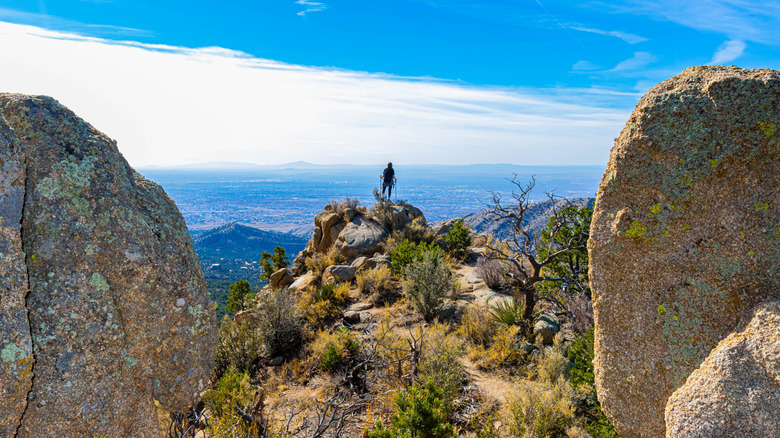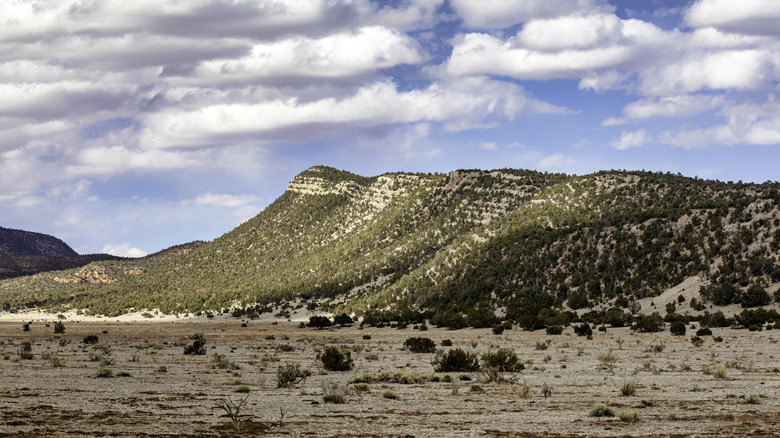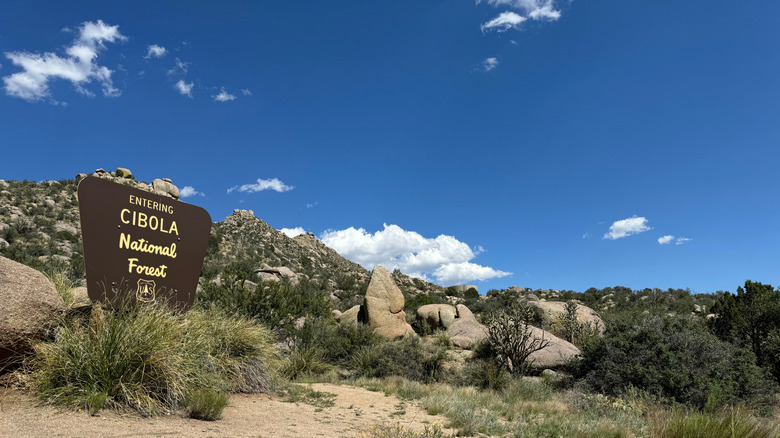New Mexico's National Forest Southwest Of Albuquerque Offers Countless Trails, Views, And Activities
When you think of New Mexico, your mind probably conjures up images of vast deserts overrun with cacti. While that image holds true for a large portion of the state, there are several pockets where you'll find thriving forests offering a reprieve from the intense summer heat. Cibola National Forest is arguably the most picturesque of these. Spanning nearly 2 million acres and four different ranger districts, it's a sprawling network of trees scattered throughout the dry desert landscape. In fact, Cibola is roughly twice the size of another national forest near the charming New Mexico town of Cloudcroft, meaning you'll have plenty of opportunities to lose yourself in the wilderness and reconnect with nature.
A good chunk of Cibola National Forest is southwest of Albuquerque, but you'll also find ranger stations brushing up against its eastern border and up to the north. It also rolls into portions of Oklahoma and Texas. Whether you're looking to summit mountains, walk along a gorgeous ridge near the city, or get lost deep in the woods, Cibola offers it all. It's become a popular destination for outdoor enthusiasts, but because it's spread across hundreds of miles, you'll want to carefully plan your trip to ensure you don't end up backtracking across the state. However, with a bit of preparation, Cibola National Forest is bound to be the highlight of your next Southwestern getaway.
Reconnect with nature in Cibola National Forest
Hiking and camping are the main attractions of Cibola National Forest, with dozens of trails and campgrounds dispersed through the terrain. If you're interested in hiking, Timber Peak Trail is a great introduction to the forest. Climbing over 600 feet, the rugged trail treats you to panoramic views of untouched New Mexico wilderness, with mountains everywhere you look. The road leading here is rough but well-maintained, and the serene trail is unlikely to have many other hikers, making it a wonderful getaway deep in the forest.
One of the most popular trails in Cibola National Forest is located in the Sandia Mountain Wilderness area, just east of Albuquerque. The South Piedra Lisa Trail is a leg-burning 1,200-foot ascent into the Sandia Mountains. Cacti, wildflowers, and verdant cliffsides line the pathway, with rolling mountains filling up the horizon. Unlike Timber Peak Trail — which is remote and rugged — this one is more well-trodden. But with some of the best views in the state, it's easy to see why. Plan on hiking alone? Read up on important safety tips to know before a solo hike. Be sure to also follow Leave No Trace principles to keep the region just as beautiful as you found it.
Camping in Cibola National Forest is a treat, as it offers a relaxed escape in the remote landscapes around Albuquerque. Many of the camps are quite basic with limited amenities, allowing you to truly disconnect and enjoy your surroundings. Dozens of campgrounds are housed within the national forest, including Capilla Peak Campground and its views of the Manzano Mountains, Hughes Mill Campground and its quick access to Mt. Withington Lookout, and Luna Park Campground with its volcanic rock formations.
Planning your trip to Cibola National Forest
At nearly 2 million acres, it's impossible to see everything Cibola National Forest has to offer in a single visit. Instead, you'll want to figure out which region to enjoy — though using Albuquerque as a launching point is a wise decision. Not only does it put you right next to the Sandia Mountain Wilderness area and isolated mountain regions known as "sky islands," but you'll also be close to some of the best parts of the national forest to the southwest.
Cibola National Forest is open year-round, though consider visiting in the fall for lovely colors and moderate temperatures. Summer weather can be unpredictable in the region, as the national forest spans a variety of elevations, and the higher you go, the more dramatic the weather changes. Summer is also greeted with afternoon monsoons. Winter is a great time to avoid crowds, though note that various trails and campgrounds may be closed (and high elevation roads could be treacherous). This is especially true for Sandia Crest, Capilla Peak, and Mount Taylor, all of which soar over 9,000 feet.
If you plan on camping, be prepared for limited amenities. Several spots offer no bathrooms or running water, meaning you'll need to come ready for a self-sufficient experience. You'll also want to check ahead for camping restrictions and fees. Many activities in the forest are entirely free, but some areas require fees or permits to assist with general upkeep. If you're flying out of Albuquerque, consider checking out a calming hot springs getaway set among red rocks before heading home. Not only is it the perfect spot to relax after days of adventuring, but it's only around an hour from the airport.


